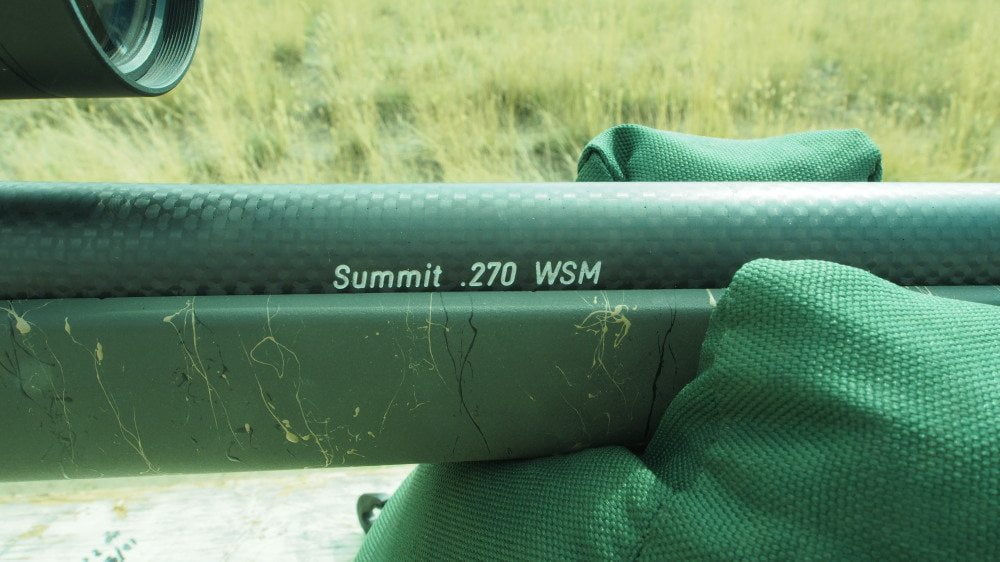
This post is Part II of my series on why I chose the 270 WSM over the 7mm Remington Magnum (in the Christensen Arms Summit Carbon Rifle).
If you missed Part I, click here Goodbye 7mm Rem. Mag, Hello 270 WSM
Like you’d expect in religion or politics, that post created quite a bit of emotion among the 7mm Remington Magnum crowd once it hit Facebook. After I weeded out the ridiculous comments and got to the reasonable, well argued ones, I decided I better clarify further on why I left my 25-year favorite caliber for the sassy 270 WSM.
First, this is not a series on 270 WSM vs 7mm Rem. Mag. If it were, the big 7 would win. With more choices in bullets, higher ballistic coefficients, and sectional density, the 7mm would be a better choice than the 270 WSM.
This series is also not about best “all around caliber”. By a very conscious choice I made decades ago, I’m not an all-around hunter. I don’t want to be. I’m a hunter of big mule deer. That is what I love. I hunt them in every habitat they live in from desert to high country and have learned that if you want to kill big mule deer, you’re going to be taking your rifle on very long hikes over very long seasons. This means ounces count.
A thinking man should know that a lightweight gun is going to require he give up a few things, namely some energy (and recoil), and probably the ability to shoot very long range (expert long range shooters like guns in the 9-13lb range for obvious reasons). This series is about putting together the best backcountry gun for the mule deer (or sheep) hunter, so keep that in mind. If you want to kill everything from Coues deer to Alaska’s interior grizzly with the same $800 gun, please stop reading now, I’ll only make you mad. Below I’m answering some of the legitimate criticism put forth after Part I.
Accuracy vs Velocity
No matter the caliber, to me accuracy is a given variable and needs to be an inch or less at 100 yards. That is why I settled on a load that was accurate but about 100 feet a second slower than what we read on the internet (and we all know everything on the internet is true.) I had several loads pushing the 3300 fps threshold but they weren’t shooting under an inch. With only a few days to tune the gun, I didn’t have time to work on making those loads more accurate- maybe next year.
The 3125 fps load (130 grain Berger Classic Hunter with 63.5 gr. R-19) I settled on is still faster than the majority of 270 Win. rifles out there, which by the way have killed hundreds of thousands of mule deer at all reasonable ranges, so I know my rifle will be plenty deadly. The 270 WSM is an accurate caliber (in a good gun of course), as I’ll show in a later post.
Energy vs Recoil
If it were only about energy and recoil didn’t matter, heck I’d be shooting a .338 Lapua or a 30-378 Weatherby as I’ve seen personally what those guns can do to a 300 lb mule deer. But those guns are big, heavy, expensive, and punishing to a 180 lb guy.
I’ve learned by first hand experience that once you enter the magnums, you have more than enough energy to put down the biggest mule deer at distances to 600 yards (and even beyond if that tickles your fancy) assuming a good performing projectile. Because of this, to me, trajectory trumps energy.
Because lightweight guns move noticeably more recoil to the shooters’ shoulder (and sometimes his eyebrow) a guy can’t just shoot magnums with heavy-for-caliber bullets. That is unless he doesn’t mind flinching recoil and occasionally getting his head split to the bone as evidenced by the multiple scars between my eyes. In real mule deer country in real conditions, you won’t be thinking about eye relief and cheek weld. Nope, you’ll be thinking “Crap, he’s getting away” -Bang! I’ll wager most guys will split their heads open given enough time when shooting magnum rifles with heavy bullets. The less recoil I have to endure the better rifleman I’m going to be.
Why Not a Muzzle Brake?
I’ll tell you exactly why. I don’t like them. Based on my experience as an outfitter, and many of my friends’ experiences, there are downsides that affect a buck hunter. First, most of the hunters I know who shoot muzzle brakes carry earplugs that they “plan” to put in before the shot. Sounds reasonable, but I’d offer that despite what we might glean from too much TV, older experienced mule deer in hunted units are masters of using cover to evade hunters and often don’t give you much time to make a shot before they’re hidden. On at least half my biggest deer, I only had seconds to get off an accurate shot. You lose critical time trying to get plugs in that might cost you your shot (not to mention one more gadget you have to remember to bring and hope you don’t lose, or have to rush to the store to buy in the last hour before you’re supposed to leave.)
Also, big mule deer can live in tight places where you’re forced to sneak around and lean against trees, rocks, and even cliffs to shoot. I have one friend in SE Idaho who lost his hearing for weeks in one ear because he leaned against a big tree to shoot and the brake funneled all the noise into his poor right ear. It was so bad it left him dazed and couldn’t make a follow up shot before the buck escaped. Another friend in Colorado suffered the same fate when he leaned against a haystack to shoot. I’ve leaned against more than one boulder to shoot at high country bucks and was glad I didn’t have a brake on. If you think you’d never make this mistake, you haven’t yet experienced real buck fever brought on by really big mule deer. If you hunt with a partner, you have to make sure he’s not too close before you light the cannon, another timesuck that also produces buck-spooking movement.
Next, you often have to lie down quickly to shoot at a buck and your barrel ends up only inches from the ground (no I don’t use a bipod either due to the weight and time it takes to set up) with a resulting dust cloud rivaling a blackpowder rifle’s, blocking your view from your target and even blowing debris in your face. Most guys don’t even know this is possible until it happens.
Finally, most muzzle brakes add weight, (remember, we’re counting ounces here) the exact thing we’re trying to get away from! They also add length to your gun. “What’s an inch?” you might balk. Enough to cause the gun to protrude far enough out of a saddle scabbard to catch more brush and even throw the hang point of the gun off, that’s what an inch is. I simply think the downsides of a brake aren’t worth it when I can kill big bucks with a smaller more forgiving unbraked rifle.
Trajectory Still Matters
Rangefinders, turrets, and ballistic calculators are often not even an option due to time constraints. You can’t know this unless you’ve been there and been there repeatedly. Just this year, I guided a hunter who lost his shot opportunity at a beauty of a 170 heavy buck at 700 yards because he spent critical seconds checking a drop chart and adjusting turrets. While he did this seemingly innocent task, the good buck disappeared into the brush forever. I guided another long-range hunter who’s proficient to 1500 yards but was wise enough to keep his scope turned down to 4X and turrets set to a short yardage until he needed to shoot long range. This paid off in spades when a good 29″ wide buck appeared for about 15 seconds in a hole in the brush near dark at the paltry range of 120 yards. He killed the buck easily, but I’ve seen and heard of too many long range set-ups failing the guy who forgets to reset everything for shorter distances, which are more common in mule deer country than the inexperienced will believe. With a simple system and a flat trajectory that allows for human error, you’ll kill more big mule deer because you’ll be faster, period.
The 270 WSM allows me to carry as light of MAGNUM possible taking advantage of flatter trajectory than a 7mm Remington Magnum (I’ll prove it below) and still have well over 1000 ft-lbs of energy out to 600 yards. Like energy, if this was only about trajectory, I’d be shooting a .223 WSSM, probably the flattest commercially available caliber in the world, but there’s too many negative trade-offs for that to be a viable option either.
7mm Remington Magnum vs. 270 WSM in Trajectory
For this comparison, I’m going to choose bullets at the upper end of Ballistic Coefficients for obvious reasons. I’m not worried about sectional density in a well constructed bullet for mule deer. A wide range of sectional density will ethically and easily dispatch even the biggest mule deer. I’ve tested this for 37+ years and won’t argue the point. All drop comparisons are at 500 yards and assume a 200 yard zero and a 1.75″ scope height. Data is from Vortex’s Long Range Ballistic Calculator. Several were range tested and chronographed as noted by *.
7mm Remington Magnum, 168 grain Berger Classic Hunter, 2825 fps*, Weatherby Ultralight 7.8 lbs, 24″ Barrel:
Drop: 38.5″
Energy: 1761 ft-lbs
Felt Recoil: 24.71 ft-lbs
7mm Remington Magnum, 150 Grain Barnes TTSX, 2975 fps*, Weatherby Ultralight 7.8 lbs, 24″ Barrel:
Drop: 38.8″
Energy: 1438 ft-lbs
Felt Recoil: 24.03 ft-lbs
270 WSM, 130 grain Berger Classic Hunter, 3125 fps*, Christensen Arms Carbon Summit, 7.3 lbs, 26″ Barrel:
Drop: 32.6″
Energy: 1533 ft-lbs
Felt Recoil: 22.91 ft-lbs
I shot 7mm Remington Mags for decades and can tell you that you won’t improve much over the loads I presented without adding barrel length. By now you certainly know why I personally don’t want to do that.
*UPDATE: Some comments on Facebook have pointed out that the 7mm Rem Mag velocities I published above are low and an unfair comparison. They are low, but they’re accurate loads (sub-1″) which I won’t budge on just for 100 fps. I tried multiple times to push the bullets faster while trying to compensate for the resulting decrease in accuracy by tweaking COAL, neck-sizing, powder switch, etc. and wasn’t able to fix the problem, hence the lower velocities. It is still a fair comparison as the 270 WSM velocity is also on the lower end for the same reasons. I’ve learned over many years and many rifles that what you read in the reloading manuals (they sell bullets) and now on the web (how many guys are really going to post on FB that his 7mm Rem Mag is only hitting 2900 fps with 150 grain bullets?), are very often the highest velocities a few people have obtained. High velocity and accurate loads don’t always coincide. I stand by the velocities I published above as they were produced in real world testing by a real guy raising a family working three jobs and only a few days to tune the gun. I certainly don’t doubt some guys can achieve higher performance in the 7mm Rem Mag but remember that higher performance is coming at a cost of increased barrel length (i.e. weight/balance) and recoil, the exact things I’m trying to negate by switching to the 270 WSM. Thank you*
Felt Recoil
Although I’ve personally felt the recoil of all three of the above loads and can already attest my 270 WSM produces less than the 7mm Rem Mag (more on the test rifles next post), I included the recoil calculations using ShootersCalculator.com. The 270 WSM produces 5-7% less recoil than the 7mm Rem Mag loads presented even though my Carbon Summit is 9 ounces lighter than my Ultralight Weatherby.
Based on everything I’ve written above, I’ll take the flatter trajectory of the 270 WSM and the lighter recoil for a backcountry mule deer rifle. Everything else someone wants to argue is splitting hairs to this deer hunter.
Make sure you “Subscribe to blog,” upper right so you don’t miss the next post on the Christensen Arms Carbon Summit tested with two different Vortex scopes. Once we get through this series, it’s time to take the gun afield and put my theories to the test on an Idaho mule deer hunt that will be posted day by day, right here… Don’t miss it.
Read all about rifles, muzzleloaders, and bows for hunting big mule deer in my new book, Hunting Big Mule Deer, How to Take the Best Buck of Your Life







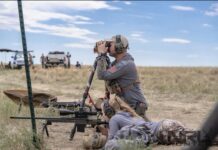
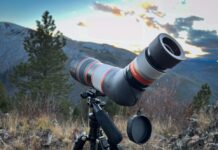





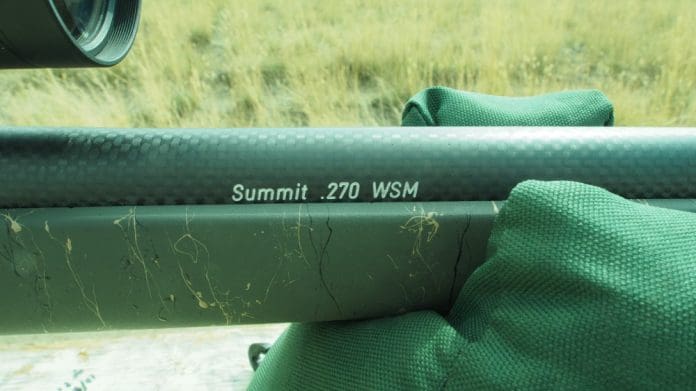
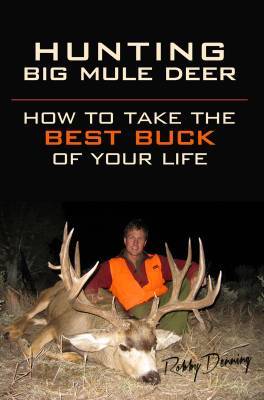



Robby I am enjoying the series, and looking forward to your field testing!! When you say you are not worried about sectional density, are you referring to bullets from .24-.3 or even less like .21? I can see the reasoning just wanted to clarify. Also does that experience also hold true for elk? Or is the common belief that a higher sectional density is required for that large of animal?
Thanks for the info!!
Mtaylor
Mtaylor, Great question and glad you pointed it out. When I wrote “a wide range of sectional densities” I was referring to ALL the different guns I’ve witnessed over the years kill big mule deer efficiently and humanely. So roughly from 25 caliber to 338 caliber, as long as it was a good hunting bullet. I’ve seen them taken with smaller calibers sporting lower sectional densities, but I think you’re under-gunned and why risk it?
This experience doesn’t hold as true for elk as I haven’t been around as many kills and personally don’t hunt them myself. As an outfitter, though, I’m always most comfortable when guys show up with 7mm Mag (or 30.06 in the standards) or bigger and preferably big magnums, as long as they can shoot them. I’m not recommending the 270 WSM for an ideal elk cartridge BUT I know in capable hands with bigger bullets than what I’m shooting, the 270 WSM will handle most elk situations fine.
Great job on explaining the ‘why’ for this gun work you are doing. I’m not in the market for the 270 WSM, but you have made this an interesting read. I am curious to see how this Summit Rifle performs for you. I could always use another rifle.
Thanks for the clarification.
Great read as always. Thanks for your explanations and reasoning.
great article. Being partial to the 7mm bullet selection, I would think a 7 wsm or 7 saum would very similar with 140 grain bullets and some dandy choices in 150 and up if one wanted very high bc bullets.
Comments are closed.